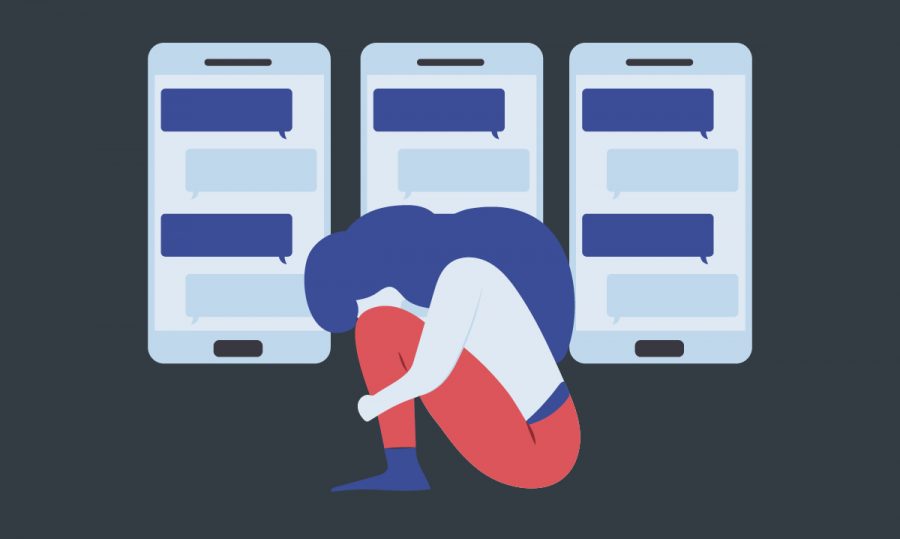From the school yard to online
November 10, 2020
Cyberbullying is a form of harassment using electronic means, by the use of electronic communication in an intimidating or threatening nature to bully a person. Cyberbullying and cyberharassment are known as online bullying.
Victims of cyberbullying experience lower self-esteem. It is very damaging for many adolescents and teens and can lead to anxiety, depression, isolation and even sucide. Some teens may feel like the only way to escape the pain is through sucide. It affects many adolescents and teens on a daily basis. Bullying can be identified by repeated behavior and an intent to harm. Many US states and other countries have passed laws to combat cyberbullying.
Online bullying has become more common especially for teenagers, and has moved from the school yard to the electronic world since technology has advanced and many teenegragers have social media platforms such as Facebook, Snapchat, Twitter and many more. Majority of states have laws that explicitly include electronic forms of communication, and most law enforcements have cyber crime units. The consequences of cyberbullying are affected by both online and offline behavior. It can be traumatizing, because bullying can potentially be viewed by anyone.
About 95% of teens in the United States have been bullied online. Social media sites are the most common digital forms of cyberbullying. Cyberbullying may be contributing to the increase in youth suicides. The top three countries where cyberbullying is more frequent are India, Brazil, and the United States. Only 34 U.S. states have laws against cyberbullying. LGBTQ students have experienced online harassment, and girls are more likely than boys to be victims of cyberbullying. Teens that have been bullied feel vulnerable and powerless they don’t feel safe. Kids who are regularly targeted by bullies often suffer both emotionally and socially, not only do they find it hard to communicate with others and make friends but they also struggle to maintain a healthy friendship.
If you or a friend are victims of cyberbullying, please tell your parents, a teacher, a counselor, or administration. It is a crime in California to post personal information about someone or to use electronic means to harass. And according to the San Diego Unified School District, “bullying (including cyberbullying), harassment or intimidation in any form are prohibited at school and school-related events (including off-campus events, school-sponsored activities, school busses, any event related to school business) or outside school hours with the intention to be carried out during any of the above. Such acts include those that are reasonably considered as being motivated by either an actual or perceived attribute that includes but is not limited to race, religion, creed, color, marital status, parental status, veteran status, sex, sexual orientation, gender expression or identity, ancestry, national origin, ethnic group identification, age, mental or physical disability or any other distinguishing character.”
Students Rights according to the State of California and outlined by the San Diego Unified School District.
For additional information, please contact the Youth Advocacy Office.


